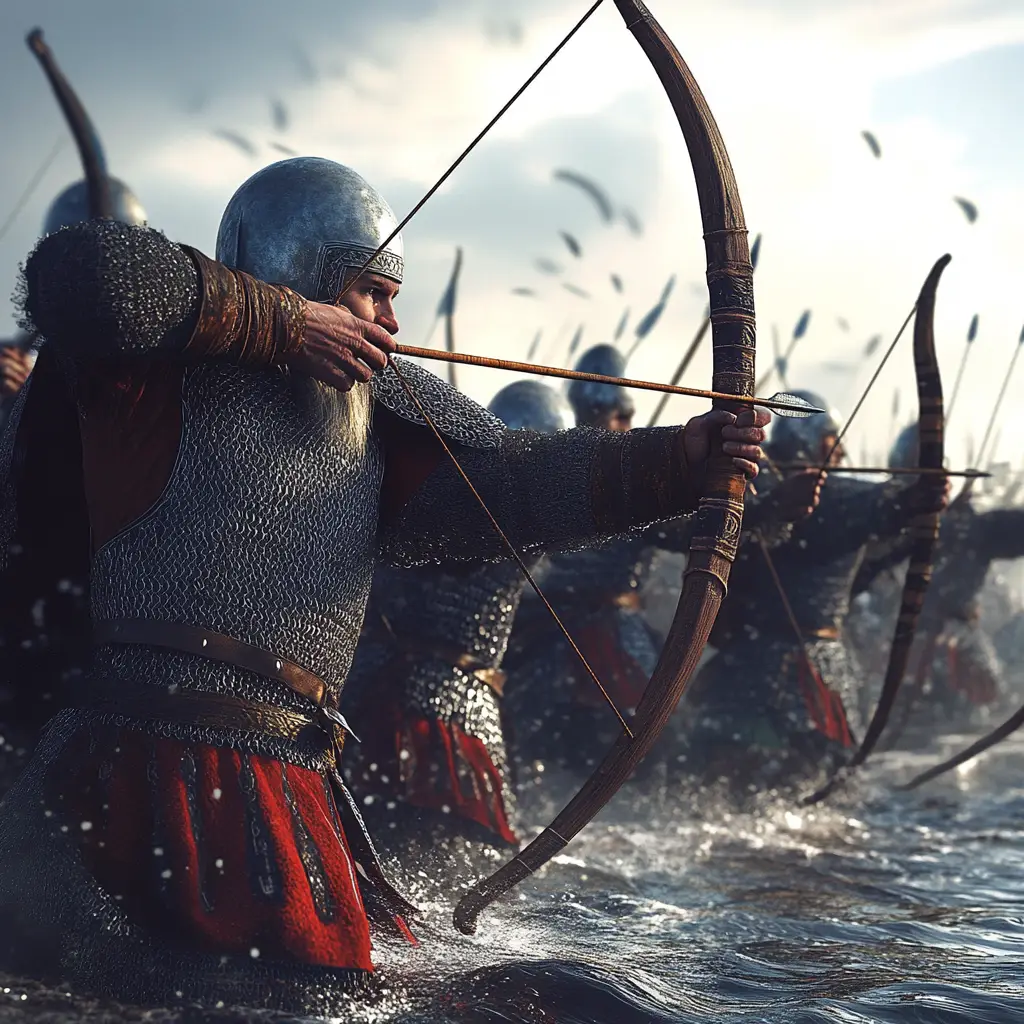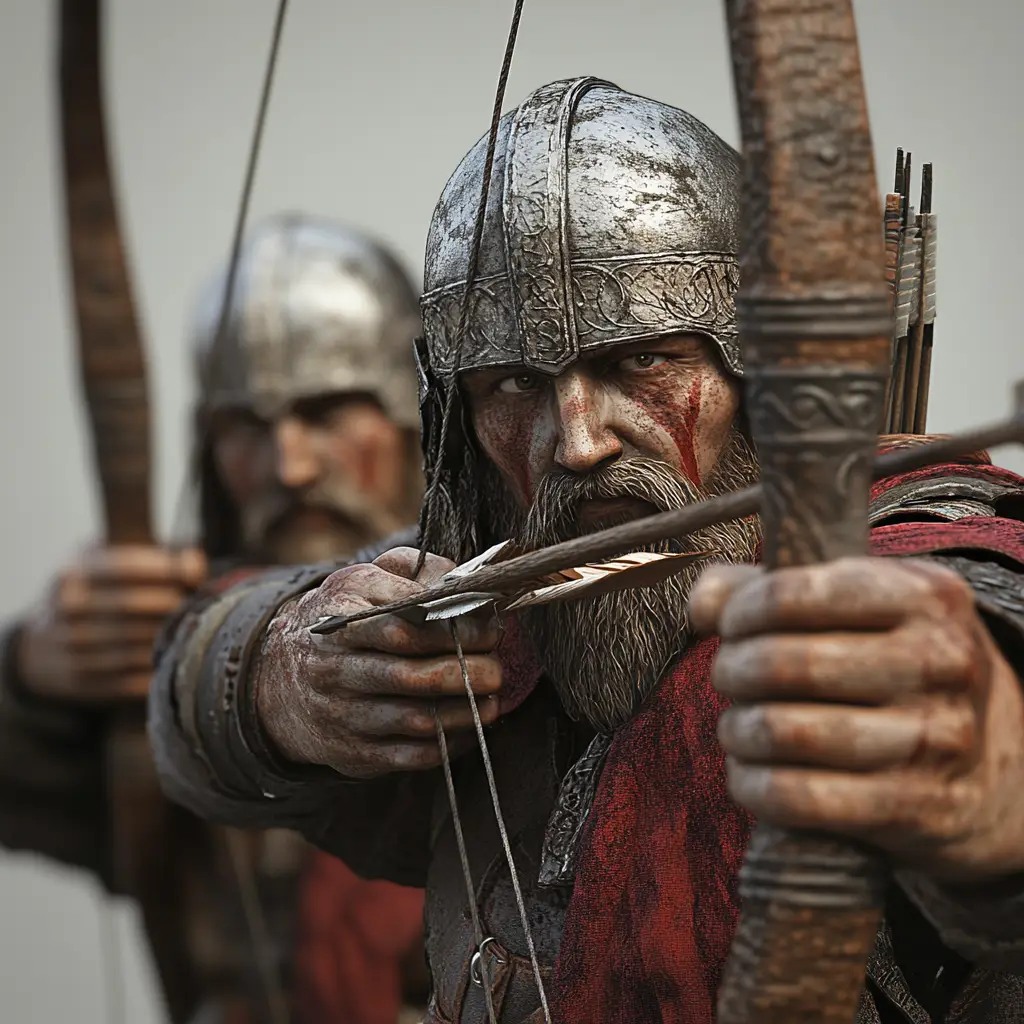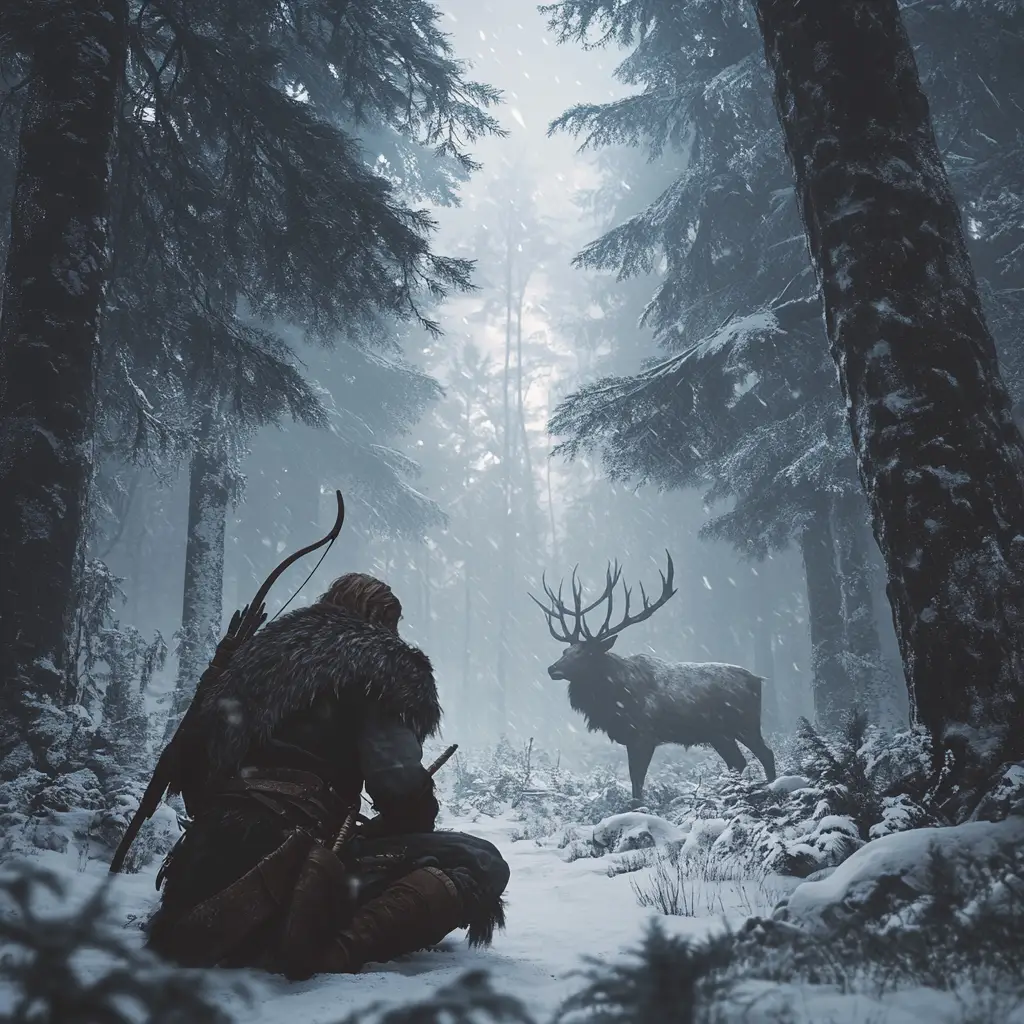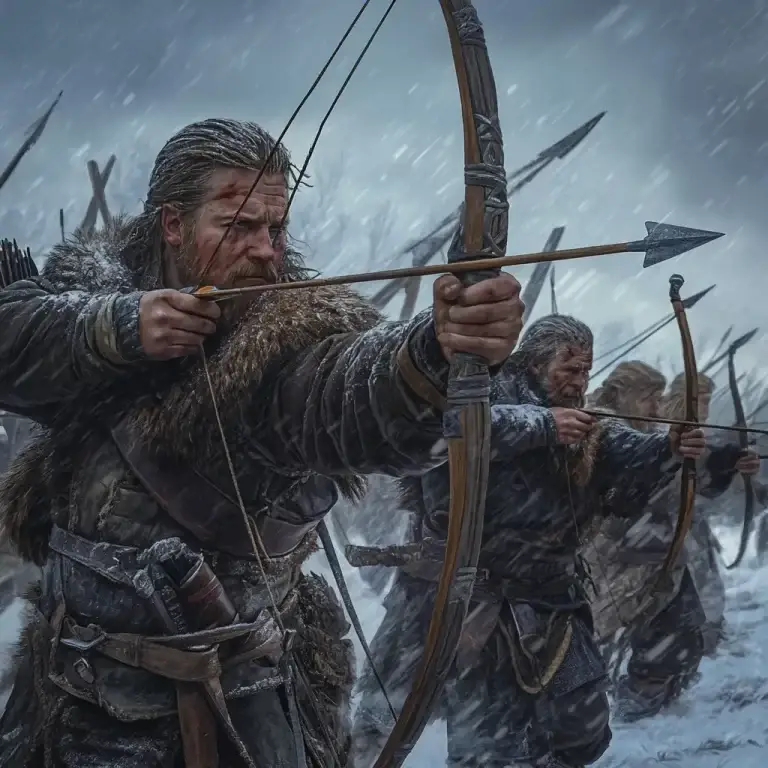The Forgotten Skill of Norse Warriors
While Vikings are often associated with axes, swords, and shields, they were also skilled archers. Though not their primary weapon in battle, the bow and arrow played a crucial role in raiding, hunting, and warfare.
Viking Archery in Battle
Vikings used longbows made of yew, ash, or elm, often reaching over six feet in height.
Arrows were typically barbed and iron-tipped, designed to pierce armour and shields.
Archers provided long-range support, weakening enemy ranks before the main melee combat.
Some elite warriors, like berserkers, may have disdained bows in favour of close combat, but archery was essential for sieges and naval warfare.
Hunting and Everyday Use
Viking archers were expert hunters, using bows to take down deer, boar, and birds.
Skilled archery was important for survival, ensuring food during long winters and travels.
Young Norse warriors were often trained in archery from childhood, improving their accuracy and speed.
Viking Bow Types
The Vikings primarily used longbows, similar to the English longbows of later centuries.
Bows were typically made from yew, elm, or ash, reaching lengths of up to 6.5 feet (2 meters) for greater draw weight and range.
Some bows were reinforced with sinew or horn, increasing their strength and durability.
Viking Arrows and Arrowheads
Viking arrows were crafted from birch, pine, or ash, fletched with feathers for stability in flight.
Arrowheads were often iron-tipped, shaped for different purposes:
Broadheads – Wide, razor-sharp for hunting and cutting through armour.
Bodkin points – Narrow, armour-piercing tips for penetrating chainmail.
Barbed arrows – Designed to cause maximum damage, making removal difficult.
Famous Viking Archers
While most Viking sagas focus on axe-wielding warriors, some legendary figures, like Egil Skallagrimsson, were skilled with the bow.
During sieges, archers were key in defending fortifications and attacking enemy strongholds.



